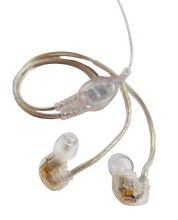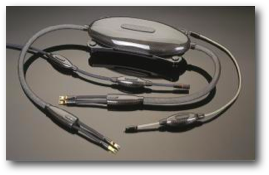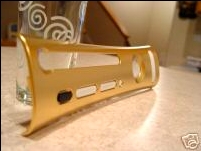What the Market will Bear?
Today’s economy has produced a myriad of wild and wonderful products that enhance our lives and provide more opportunities for leisure, and in some cases are just plain fun.
However, somewhere along the way, we have gone from reasonably priced items that provide actual value for money into the realm of the strange, esoteric, and just plain ridiculous items that are priced up in the stratosphere. In this realm, I cannot possibly see any relationship between the selling price of such items and the actual value that they provide.
In it’s simplest form, the law of diminishing returns applies here. While expensive cars, jewelry and fur coats could be construed as status symbols for the well-to-do, and therefore have an intrinsic “value” in the very possession of them, this rule doesn’t seem to apply as uniformly to items that are actually supposed to be used on a day-to-day basis to accomplish a task.

As a first example, we have the Shure E5c Sound Isolating Earphones. These are US$499 a pair, for earbud headphones. Now, despite the growing “trendiness” of the iPod itself, I’m not one to see expensive headphones as any kind of a status symbol, so I can’t possibly imagine them being priced high as something that you would show off to your friends at parties. While most people would be impressed if you drove up to a party in a Ferrari or a BMW, people are more likely to wonder what you’ve been smoking if you walked in and announced that you had paid $500 for a set of earbuds.
Therefore, in my ever-so-humble-opinion, the price tag on these must be justified by the extremely high quality sound and fidelity of the product. Now, I don’t deny that Shure makes some very good audio equipment, and frankly I could possibly understand somebody picking up the Shure E2C or even E3C headphones, which are more in the $100-150 price range. However, I personally suspect that the majority of music listeners cannot possibly hear the difference between even those earbuds and a good quality set at half the price. I further doubt that there’s a sound quality discernible to 99% of the population between the E3C and E5C earbuds.
So I can only assume that Shure must be marketing these for that 1% of the population that can actually hear the difference, right?Not likely. Very few companies can sustain a business model based on such a small consumer base. More likely Shure is counting on the 25% of the population who consider themselves “audiophiles” and think they can hear the difference.
While I don’t dispute that there are those who can hear extremely subtle differences in fidelity, I think that today’s generation of audio technology has produced a huge swath of pretentious audiophile-wannabees who buy all of this expensive equipment just to try and convince themselves and those around them that they somehow have superior hearing, and are therefore better than the rest. After all, how likely is the average person to be able to discount what somebody else can or cannot hear.
As a result, since you can’t judge somebody’s “audiophileness” in any direct and meaningful way, you’re left only to judge their ear quality by the equipment that they buy. Thus begins a game of one-upmanship played by the audiophiles based on how much more money they can spend on “the next big thing” that will somehow prove that since they paid such insane amounts of money for a component, there must be something “special” about their particular auditory canals.
In the end, the person with the best hearing must be the person with the most expensive equipment. After all, they wouldn’t spent all that money if they couldn’t hear the difference, would they?
Well, the sad answer to that question, in a majority of cases, is “yes, they would.” The result is a huge market for “audiophile-quality” products, with price tags that continually spiral into the realm of the ridiculous.
This is essentially the Frasier and Niles Crane attitude applied to the audio world. I remember one episode of “Frasier” where Niles and Frasier were comparing Niles’ “midwife” (the term they used was “doula”, but whatever) to Frasier’s matchmaker. Frasier won the argument by stating that he had paid $10,000 for his matchmaker, at which point Niles automatically assumed that she must be that good.
Well, the same assumptions apply in the audiophile world. If I’ve paid $500 for a set of earbuds, then my hearing must really be that good.

The earbuds of course are just the tip of the iceberg. For something truly insane, one must check out the Aurant Transparent Opus MM Speaker Cables. US$30,000. For speaker cables.
The response of the average person to this is usually unprintable. Most of us wouldn’t have a difficult time deciding between making a down-payment on a house or buying speaker wires.
But of course, the audiophile’s response is something to the effect of, “Wow, for $30,000 they must be good!” (as he smugly thinks to himself how impressed all of his friends will be when he can plug in these cables and then claim that his ears are so good that these cables have made all the difference in the world to his listening experience).
Again, I’m not discounting the fact that there might be a few rare people out there that actually could hear the difference between these and a lower-priced set of speaker cables, merely that there are a larger number of people out there who just buy the expensive stuff and then pretend that they can hear a difference. However, even to those people who can hear it, I would really have to ask if that difference is worth $30,000. Even if you have that kind of money to blow, does spending $30,000 on a piece of wire really provide that kind of value?

Personally, if you’re just looking to blow $30,000 or so for the sole purpose of impressing your friends, you would do a lot better to check out the Microsoft XBOX 360 Solid Gold Face Plate for a mere opening bid of US$36,000. At least gold has some intrinsic value in any form, and if you had that kind of money to invest in gold anyway, what’s flashier, a bullion certificate or a solid-gold faceplate for your XBOX?